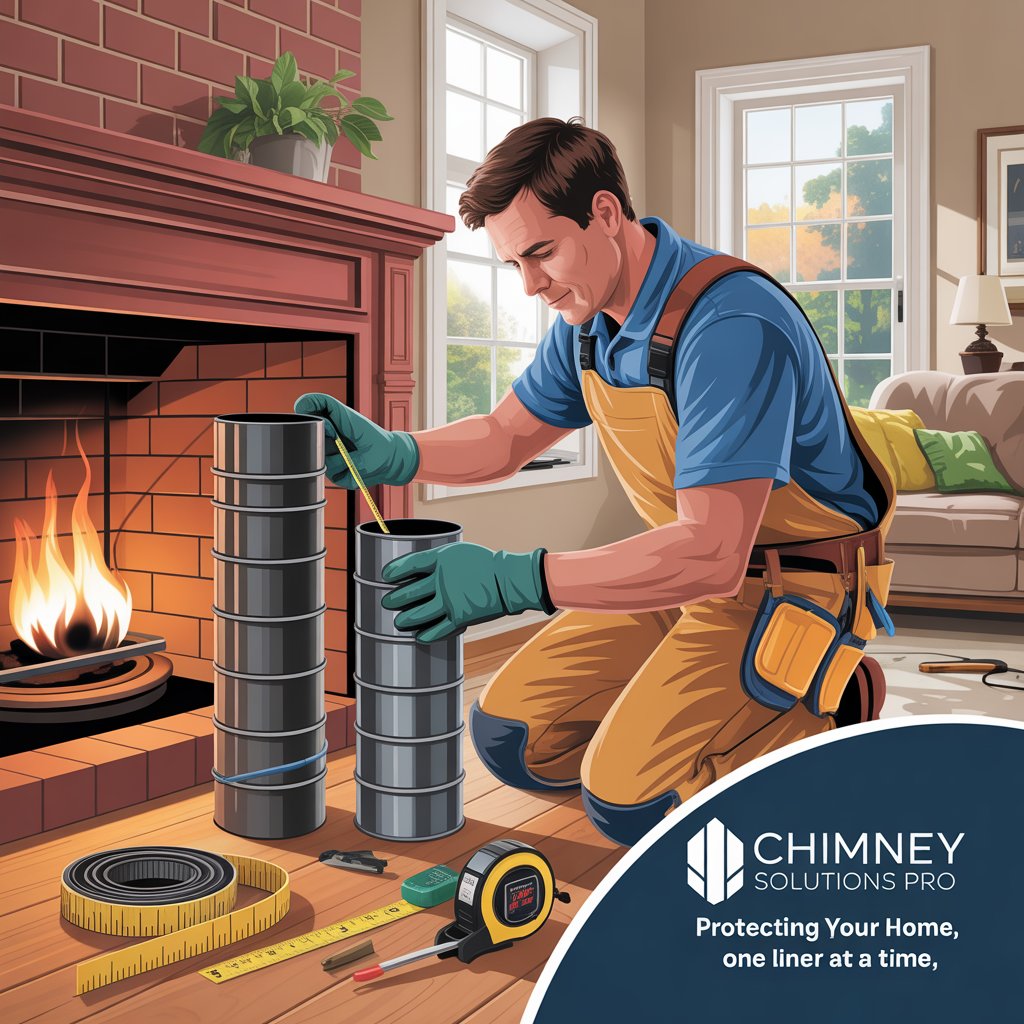If you’ve ever looked up your chimney and wondered what’s actually going on in there you’re not alone. A lot of homeowners in Charlotte don’t realize that one of the most important parts of their chimney is something they never see: the chimney liner in Charlotte. But do all homes in Charlotte really need one? Or is it one of those things contractors push just to upsell?
So… What Is a Chimney Liner, Anyway?
Before we dive into the Charlotte-specific stuff, let’s talk basics. A chimney liner is exactly what it sounds like a liner that runs up the inside of your chimney. It’s usually made of clay, metal, or ceramic, and its job is to:
- Keep heat and fire from reaching the wood framing in your walls
- Protect the brickwork from corrosive smoke and gases
- Improve the draft so smoke actually leaves your house (and not your living room)
Think of it like the insulation in your attic silent, hidden, but crucial.
Why Charlotte Homes Are a Special Case
Now here’s where it gets local. Charlotte has a mix of old and new homes, and that really matters when it comes to chimney liners.
- Older homes (pre-1950s) often have unlined chimneys or liners that have deteriorated over time.
- Newer homes, built under updated codes, almost always have a liner already in place usually stainless steel or clay.
Plus, Charlotte’s humid summers and mild, wet winters can accelerate chimney damage. That extra moisture? It mixes with smoke residue and creates a nasty, acidic mess that eats away at bricks and mortar if there’s no liner to block it.
Here’s a quick breakdown:
| Home Type | Likely Liner Status | What You Should Do |
| Pre-1950s Home | Possibly no liner or damaged clay | Get an inspection ASAP |
| 1950s–1990s Home | May have clay liner, check condition | Inspect every few years |
| Post-2000 Home | Likely has stainless steel liner | Still inspect every 2–3 years |
Do I Have to Get One Installed?
This is where a lot of homeowners get confused. Technically, you don’t have to install a chimney liner unless you’re doing one of the following:
- Installing a new gas appliance, like a furnace or water heater that vents through the chimney
- Replacing your old fireplace or converting to gas logs
- Selling your home (it might come up during inspection)
- Your current chimney is unsafe to use as-is
But here’s the thing: even if it’s not legally required, skipping a liner can be a major fire hazard. The National Fire Protection Association says that most chimney-related house fires are caused by a damaged or missing liner.
“A properly installed and maintained chimney liner can mean the difference between a warm winter evening and a dangerous house fire.”
— Jake Rollins, certified chimney sweep in North Carolina
Also, your home insurance might not cover fire damage if the chimney didn’t meet safety standards. Yikes.
How to Know If You Need One
Unless you’re crawling up there with a flashlight (please don’t), the best way to find out is to get a Level 2 chimney inspection. That’s the kind where they send a camera up the flue and check for cracks, gaps, or missing tiles.
Here are a few red flags you can watch for from ground level:
- Smoke backing up into your home
- Strong, musty smells from the fireplace (even when it’s not in use)
- Cracked masonry around the chimney
- Bits of tile or rust flakes in the firebox
If any of those show up, call a pro. It doesn’t necessarily mean disaster, but you’ll want peace of mind.
Is It Worth the Cost?
Let’s talk money. Installing or replacing a chimney liner in Charlotte typically costs:
- Clay liner: $2,000–$3,500
- Stainless steel liner: $1,800–$3,000 (more flexible and common today)
- Cast-in-place liner: $3,000–$5,000 (less common, used for damaged chimneys)
While that’s not pocket change, it’s way cheaper than chimney repairs or fire damage. Plus, if you’re thinking of selling your home, having a well-maintained chimney system is a selling point.
Wrapping It Up: The Truth About Charlotte Chimney Liners
So, do all Charlotte homes need a chimney liner? The honest answer is: Not all but most should have one. If your home already has a safe, intact liner, great. But if you’re in an older home or making updates to your heating system, don’t ignore it.A chimney liner isn’t just an “extra.” It’s the unsung hero that protects your home from fire, toxins, and long-term damage. And in a place like Charlotte, where weather and home age vary so much, it’s worth the quick inspection to make sure your system is safe and sound.If you’re unsure where to start, talk to a local, certified chimney sweep (yes, that’s a real job and no, they don’t all wear top hats). One inspection could save you a whole lot of stress later on.
Read More:Chimney Sweep
